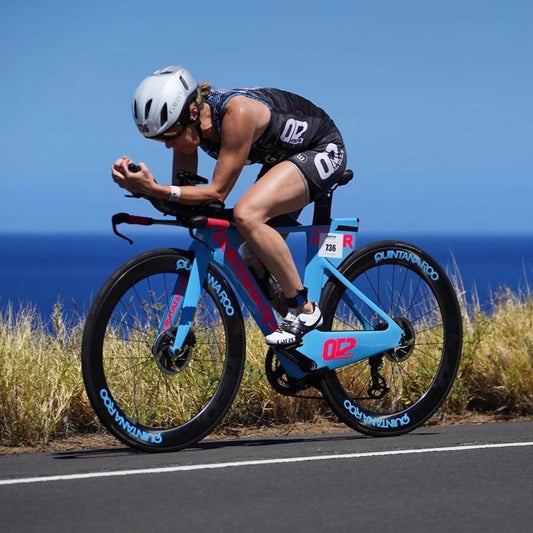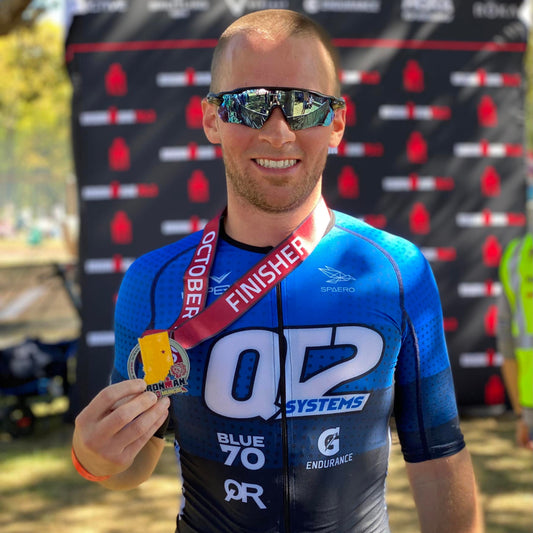For many triathletes, the “dream goal” is getting to Kona. That’s not the goal for all triathletes, of course. But that dream is prevalent enough so that you can assume just about everyone toeing the line at an Ironman has at least toyed with the idea. And then, if an athlete is serious enough about the sport to hire a coach, you can bet that a Kona qualification is something floating around in their mind.
As such, I view getting athletes to Kona as a very high priority, and I’ve found some success in achieving that. For the last 8 years, I’ve been working as a coach for QT2 Systems, and each year since 2012, approximately 30-40% of my athletes have qualified for Kona. Since only 1-2% of athletes at any given Ironman will claim Kona slots, I feel justified in saying it means that I’m probably doing some things right, and have some tips that you will hopefully find useful…
1. Keep your athletes healthy. This matters above all else. Even if they get screaming mad at you, and are scared that they’re “not training enough”, and think you’re crazy: keep them healthy. Biking and swimming are generally low-risk with regards to injury, but you have to monitor your athletes closely with running, or when they’re treating/rehabbing an injury, as that’s where the vast majority of issues occur. I can tolerate an athlete adding on extra swimming or biking, but I will not tolerate an athlete adding in extra running, or pushing too hard during injury treatment/rehab. There is no single workout, or week of training, or even month of training, that’s worth throwing away a season for. If I had to boil it down to a single sentence, it’d be this, “Don’t let a 2-week injury turn into a 2-month injury.”
(p.s. Also, make sure your athletes are doing their preventive maintenance, i.e., foam rolling, massage, fish oil, and/or acupuncture. Don’t just “mention it off-handedly”. Make sure they are doing it.)
2. Don’t let a race distance force an athlete into building training volume & intensity too quickly. An athlete’s volume and intensity should be determined by what they can handle physically, mentally, and logistically, not necessarily by a race distance. How do you determine what they can handle? You look at their racing history, their injury history, their training volume history, their working hours, their family situation, their other commitments, and their willingness to maximize recovery.
I’ve seen way too many athletes, and coaches, think that they need to hit some arbitrary number in order to run a marathon, or do an Ironman, or run an ultra (“But I NEED to do a 3-hour run before my Ironman!“). My general response to that is either “Why?”, or “Says who?”
I refuse to jam an athlete into chasing a number, if they aren’t ready for it. They want to do an Ironman in 6 months? Well that’s great. But maybe their body needs more than 6 months to get ready to cover the distance. Or maybe their body can get through the distance on race day, but can’t handle the required training volume/intensity to go after race day with a high intensity effort (somewhere around 70%-80% of FTP on the bike, and then push a higher HR on the run than they did on the bike). All of that is ok, but you have to be able to make that evaluation, and be honest with your athlete about it. Your best bet is to remind the athlete that they’re training as hard, and as much, as they can currently handle, and you’ll send them to race day in the best possible shape they can be in on that given date. And honestly, 90% of the people in their division are probably operating with similar constraints on their training, so it ends up being a somewhat level playing field (grading on the curve!).

3. Be strict with race schedules. For an athlete to make real progress, they need to put in consistent training blocks. The #1 enemy of this is injury, but not far behind that is “over-racing”. I’ve seen the race schedules of many un-coached athletes, and they can be a bit concerning, in extreme cases. Athletes often get “addicted” to racing, try to cram every local race into their race calendar, and completely lose sight of any long-term goals, because they feel they need to go “beat so-and-so” at Race X. Chasing short-term goals ends up sabotaging progress towards long-term goals, and the athlete hits a plateau.
This doesn’t mean that racing is “bad”, obviously, but it does mean that it needs to be closely controlled. Why? Because the rest needed heading into a race, and the recovery needed after a race, creates a “valley” in an athlete’s training volume, where they’re losing valuable training opportunities. Also, travel for races introduces significant amounts of life stress (and possibly financial stress), and as they say “Stress is stress.” One of your major jobs as a coach is to help manage overall stress in an athlete’s life, and you need to take that seriously. An athlete carrying unsustainable stress levels is bound to crack, eventually…
I’ve found that an athlete racing once per month is reasonable frequency for striking a balance. But there are a lot of “ins & outs” to this, due to variables introduced by race distance (i.e. an Ironman needs more recovery time than a Sprint), and athlete needs (ex. if an athlete has a “top-end speed” limiter, you might give him/her the green light to race twice per month, as “glorified speed workouts”). I could go on for pages with several more exceptions/qualifiers, but hopefully you get the point – understand what an athlete’s main goal is for the year, and build the race schedule around the best possible path to reach that goal. Only include races if they are a part of a logical path to achieving the goals of the season. This is going to require you to be the “bad guy” sometimes, and say “no”. But as long as you are doing it for the right reason, they’ll thank you, when they nail their goal race.
This is getting long, and I’m only scratching the surface, so I’m going to break it up into 2 parts. This ends part 1. Stay tuned for part 2!
This post was written by QT2 Level 3 Coach, Doug Maclean.





